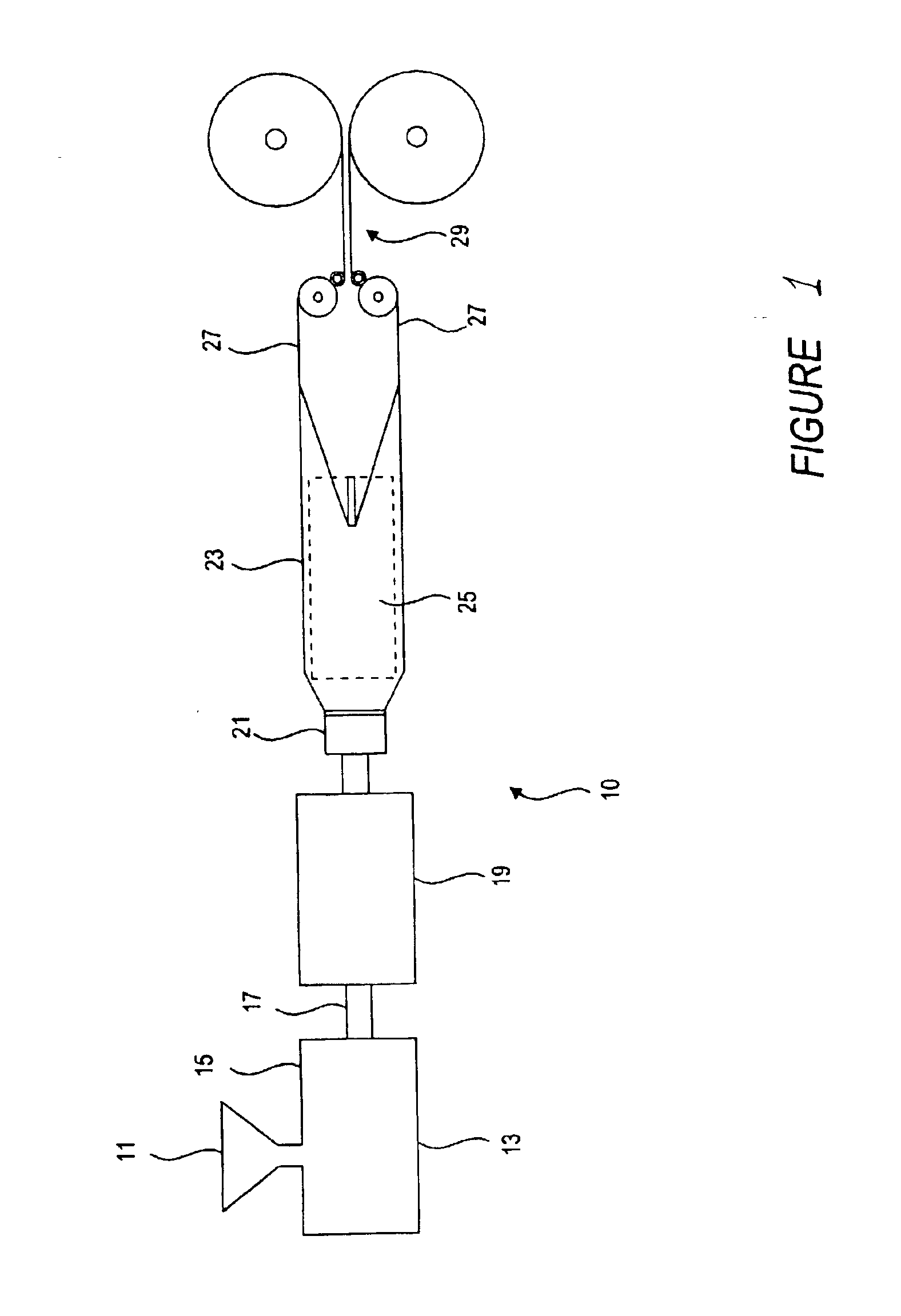Polyolefin foams made with isopentane-based blowing agents
a technology of isopentane and blowing agent, applied in the field of foams, can solve the problems of corrugation, use of blowing agent, etc., and achieve the effect of low density
- Summary
- Abstract
- Description
- Claims
- Application Information
AI Technical Summary
Benefits of technology
Problems solved by technology
Method used
Image
Examples
examples
[0036]Various blowing agents were tested with the results shown below in Tables 1 and 2. Specifically, several foams were made from comparative blowing agents and inventive blowing agent blends. It should be noted that in the various examples reported in Tables 1 and 2, the hardware was the same and operated in exactly the same way, the only variable was the blowing agent blend. All of the inventive blowing agent blends included (a) isopentane and (b) either ethane, n-propane, isobutane, butanes (a combination of isobutane and n-butane), 1,1,1,2-tetrafluoroethane (HFC-134a), dimethyl ether, or combinations thereof. The comparative blowing agents did not include isopentane, but rather included either ethane, n-propane, isobutane, butanes (a combination of isobutane and n-butane), HFC-134a, or combinations thereof.
[0037]Each of the foams was made with low density polyethylene (LDPE) having a density of 0.920 g / cm3 and a melt index of 2.0 g / 10 min at 190° C. In addition to the blowing ...
PUM
| Property | Measurement | Unit |
|---|---|---|
| boiling point | aaaaa | aaaaa |
| mol % | aaaaa | aaaaa |
| mol % | aaaaa | aaaaa |
Abstract
Description
Claims
Application Information
 Login to View More
Login to View More - R&D
- Intellectual Property
- Life Sciences
- Materials
- Tech Scout
- Unparalleled Data Quality
- Higher Quality Content
- 60% Fewer Hallucinations
Browse by: Latest US Patents, China's latest patents, Technical Efficacy Thesaurus, Application Domain, Technology Topic, Popular Technical Reports.
© 2025 PatSnap. All rights reserved.Legal|Privacy policy|Modern Slavery Act Transparency Statement|Sitemap|About US| Contact US: help@patsnap.com

